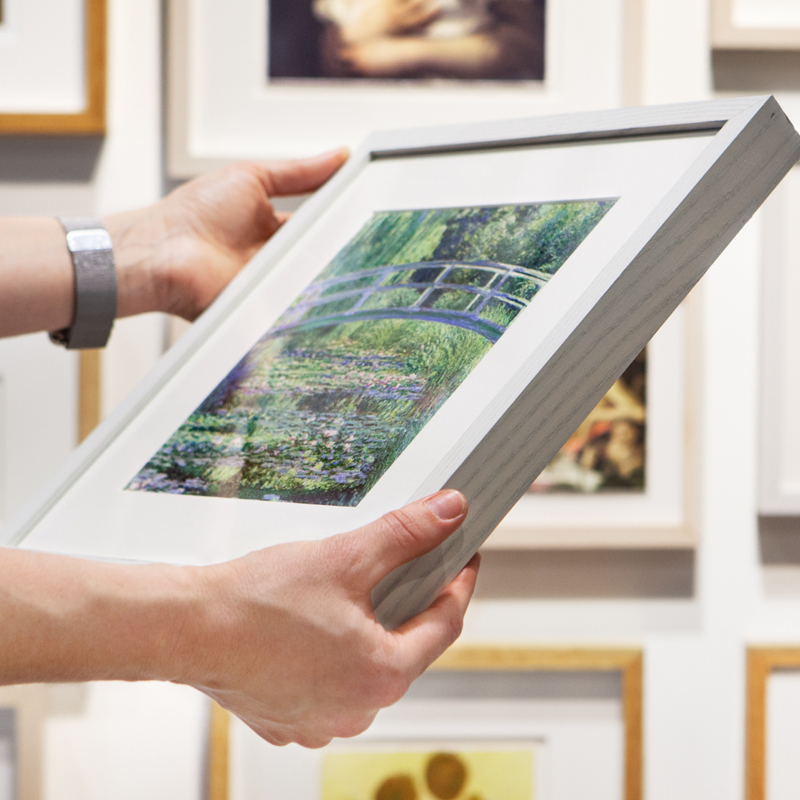Harmen Steenwyck, 'Still Life: An Allegory of the Vanities of Human Life', about 1640
About the work
Overview
There’s no doubt about where our gaze is directed here. A dramatic shaft of sunlight cuts through the gloom to highlight the empty eye sockets and gap-toothed grin of a skull which lolls to one side on the edge of the table. We are staring death in the face, while the snuffed-out lamp and ticking watch remind us that our time too will come.
This genre of painting is known as a vanitas still life. The word refers to a passage in the Old Testament which contrasts the transience of worldly life with the everlasting nature of faith: ‘All is vanity. What profit hath a man of all his labour which he taketh under the sun?’
The implication is that human endeavours, pleasures and possession – symbolised by the books, the musical instruments and the expensive Japanese sword – are ephemeral and futile.
Audio description
Listen to an audio description of Harmen Steenwyck's 'Still Life: An Allegory of the Vanities of Human Life'
Transcript
This is a description of 'An Allegory of the Vanities of Human' Life by Harmen Steenwyck, painted around 1640. It is an oil painting on oak wood panel, about 40 cm high and 50 cm wide. A broad frame in dark blackened wood focuses attention on the jewel-like colours, and in the lowered lighting of the gallery, the picture appears to be glowing with its own light source.
The picture is broadly divided into two triangles. In the upper left triangle, there is grey, empty space. In the lower triangle, a collection of objects is heaped on a plain wooden table top, close to eye level. The objects fit tightly within a wedge-shaped arrangement, lowest on the left, highest on the right. The drama is provided by a beam of light which slants diagonally across the composition from the top left corner, catching and gleaming on the reflective surfaces of the objects, making them gently glow. A profound stillness makes us aware of the care taken to organise what initially seems a random composition.
Starting at the left edge of the table, a sea-shell is set slightly apart from the other objects. It is large enough to fill the palm of a hand, a cream-coloured spiral shape with a pearl-like shine. To the right of the shell is the black and gold handle and hilt of a sword. The blade is in a black and gold sheath, extending across the table to the right, becoming hidden among the other objects, which include a bundle of pink silk cloth. Just in front of the sword hilt is an open pocket watch.
Protruding over the front edge of the table is one end of a pale wooden recorder. It disappears under the jaw of a human skull that stares out at us from empty eye sockets, its teeth hanging over the table edge. The skull tilts to the right, resting on one of two leather bound books, the other propped up behind it. Their covers are slightly lifted, as if they have been read and held open many times. Behind the skull’s polished, rounded cranium, a small brass spherical oil lamp is releasing a wisp of smoke from its spout.
Stacked up towards the back of the table, to the right, is the domed back of a wooden lute, and below that, the fluted mouth of a type of oboe.
Furthest to the right, and forming the highest point of the triangular shaped mound of objects, is a large earthenware wine flask, with a frayed loop of rope as a handle.
Wide bellied and with a narrow base, it stands on a box with the artist’s signature on it. Its volume is balanced by heavy folds of dark fabric, falling over the side of the table, in deep blue tones.
The artist uses his mastery of oil paint techniques to convey the details of textures and surfaces: we might imagine exploring them with the fingers, the cool metal, warm polished wood, and slippery sheen of satin.
Each object appears real, and yet has a symbolic meaning. The skull reminds us of the brevity of life, the musical instruments suggesting pleasure, the pocket watch, the passing of time. They remind us of the futility of pursuing riches, power, or accolades. This was a popular theme for Dutch still life paintings, referred to in the painting’s title of vanitas, or vanity. The painting suggests we should spend our time wisely, and appreciate the beauty of life around us.
Key facts
Details
- Full title
- Still Life: An Allegory of the Vanities of Human Life
- Artist
- Harmen Steenwyck
- Artist dates
- 1612 - 1656
- Date made
- about 1640
- Medium and support
- oil on wood
- Dimensions
- 39.2 × 50.7 cm
- Inscription summary
- Signed
- Acquisition credit
- Presented by Lord Savile, 1888
- Inventory number
- NG1256
- Location
- Not on display
- Collection
- Main Collection
Provenance
Additional information
Text extracted from the ‘Provenance’ section of the catalogue entry in Neil MacLaren, revised and expanded by Christopher Brown, ‘National Gallery Catalogues: The Dutch School: 1600–1900’, London 1991; for further information, see the full catalogue entry.
Exhibition history
-
2013Vermeer and Music: The Art of Love and LeisureThe National Gallery (London)26 June 2013 - 8 September 2013
Bibliography
-
1960Maclaren, Neil, National Gallery Catalogues: The Dutch School, 2 vols, London 1960
-
1991Maclaren, Neil, revised by Christopher Brown, National Gallery Catalogues: The Dutch School, 1600-1900, 2nd edn (revised and expanded), 2 vols, London 1991
-
2001
C. Baker and T. Henry, The National Gallery: Complete Illustrated Catalogue, London 2001
About this record
If you know more about this work or have spotted an error, please contact us. Please note that exhibition histories are listed from 2009 onwards. Bibliographies may not be complete; more comprehensive information is available in the National Gallery Library.

